Remove snow
The first step is to clear the roofs of the gazebos, saraev and other buildings from snow. Heavy masses can damage the roof, which is why it is so important to remove them now so as not to repair buildings in the future.
Pay special attention to polycarbonate greenhouses - this is a rather fragile material that may not withstand pressure.
Protect conifers
Young coniferous seedlings must be covered with spruce or pine branches in February for two years after planting, and thuja and junipers - within four. The bright light of the winter-spring sun triggers photosynthesis, but in the frozen ground the roots are still "sleeping" and the plants waste water and then burn out.
As a material, you can use burlap, tying her up a tree or a hut made of slats.
Cover the beds
Leave the snow lying on the beds with winter crops to loosen the ground. And transfer the drifts from the paths to the greenhouse - 3 buckets per square meter are enough. Melt water will nourish the soil, making it more fertile.
If there is little snow, try to keep what you have by covering the beds with spruce branches. Form drifts around the tree boles to protect them from burns and freezing of the roots.
Whitewash the trunks
If you haven't whitewashed the trees in the fall, do it before mid-February. Temperature changes at the end of winter threaten wood freezing, and thanks to whitewashing, this is easy to avoid.
Use a water-based paint purchased specifically for this purpose from a garden store. Only handle trunks in dry weather.
Attract birds
February is a difficult month for birds in the garden. Make feeders and birdhouses higher to keep hungry cats out of your birds. Replenish feed stocks in time - sunflower seeds, cereals, nuts, bacon, dried berries will do.
Once accustomed to the garden, the birds will help you in the spring and summer, when they begin to catch adult insect pests and carry larvae for chicks.
Prune fruit plantations
February is the time to rejuvenate your garden trees and shrubs. For sleepy plants, this procedure will be less traumatic. Remove dry and broken branches, form a bowl-shaped crown, removing some of the skeletal branches, cut off excess growth from shrubs.
Slices must be even, without damage... Some growers cover fresh cuts with ash for decontamination.
Prepare planting material
In winter, the seeds should be disassembled and sorted (in chronological order). Particular attention should be paid to the material collected with your own hands: it is tested for germination. After that, you can go to the store, making a list of what you need - this will help protect yourself from rash spending.
February is the time to warm up the onion sets. Keep it about a battery for 4 weeks to reduce the number of plants going into the arrow.
Plant flowers
For a spring flower bed, prepare those varieties of flowers that can be planted in open ground before anyone else and observe flowering in April.At the end of February, plant annuals in a container:
- petunia seeds (it has a long growing season);
- begonias;
- lobelia;
As well as perennial plants:
- pansies;
- delphinium;
- lupine;
- chrysanthemums.
Tackle seedlings
Sow seedlings of slow-growing crops: these are late-ripening varieties of tomatoes, bell peppers, eggplants, leeks and celery. And it's not too late to sow garden strawberries!
To prepare store-bought soil, decontaminate it from pathogenic microflora and possible larvae by steaming.
- To do this, place the package in a bucket filled with hot water.
- Cover and let cool.
Conduct inventory revision
This procedure will allow you not to buy too much when preparing for the garden season: tools, covering material, twine and others. It is worth purchasing drugs in advance to combat pests and plant diseases. It is also necessary to repair equipment, sharpen tools, disassemble supplies of consumables and throw away the excess in order to save space.
In a heated house, you can eliminate problems in the form of sticky locks and minor breakdowns, update furniture or decorate the interior.
The opinion that there is nothing to do at the dacha in February is deceptive. A wise gardener will always find something to do, since his beloved dacha requires care at any time of the year.

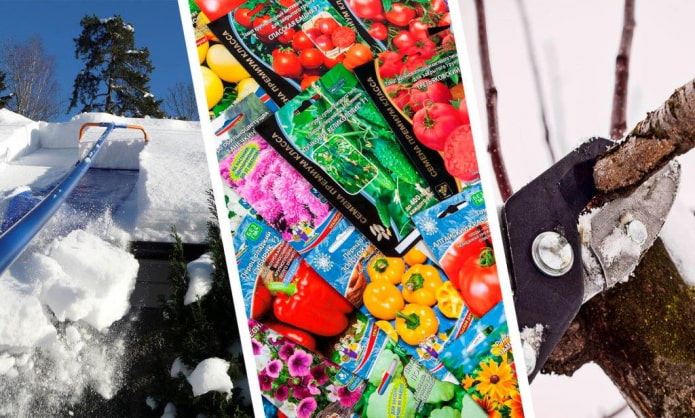
 10 practical tips for arranging a small kitchen in the country
10 practical tips for arranging a small kitchen in the country
 12 simple ideas for a small garden that will make it visually spacious
12 simple ideas for a small garden that will make it visually spacious

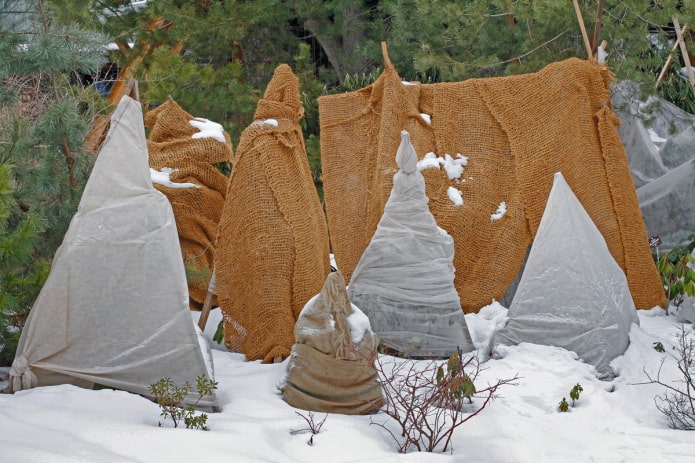
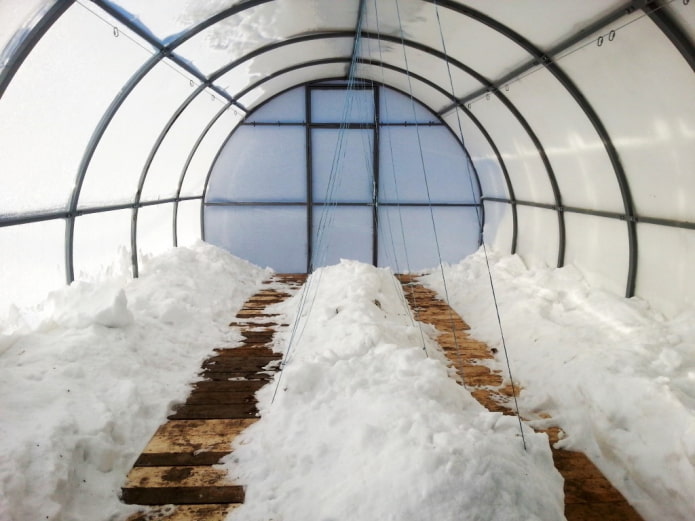

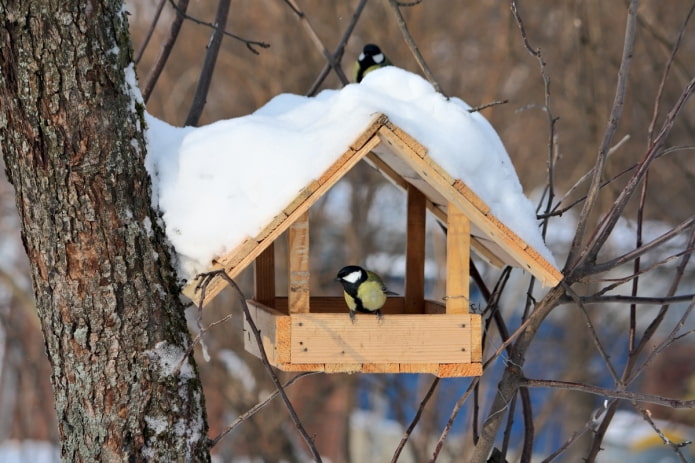
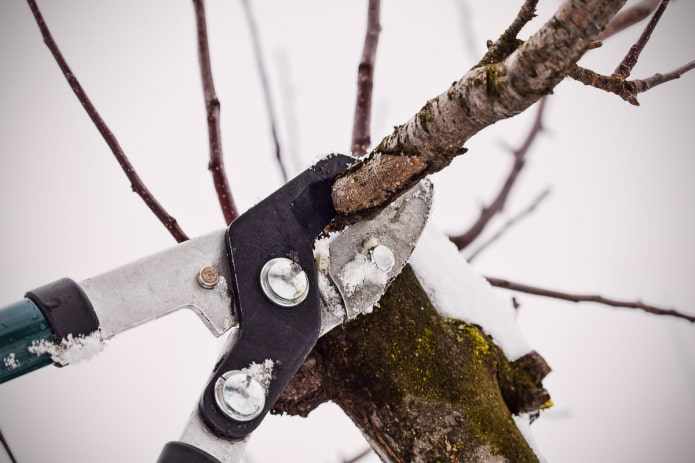
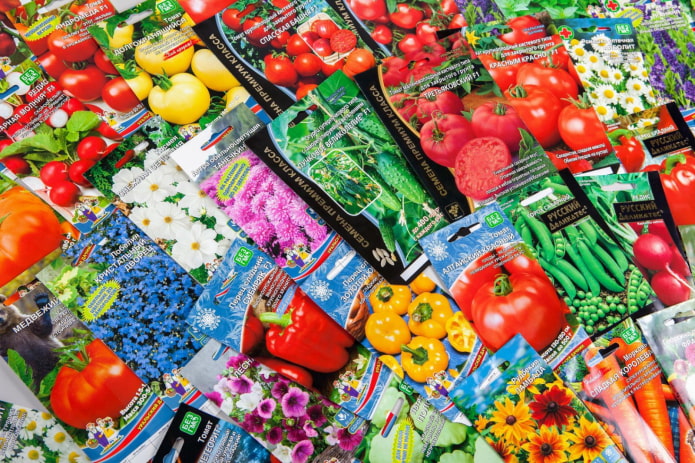
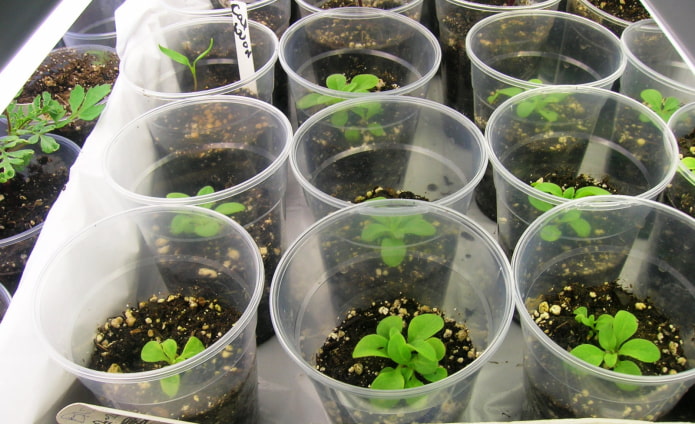
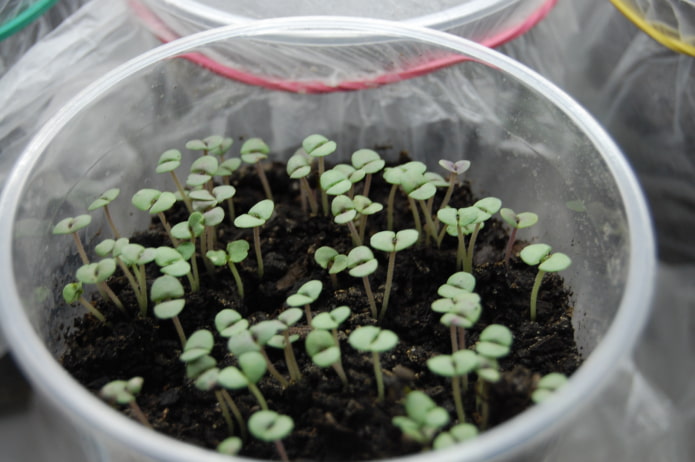
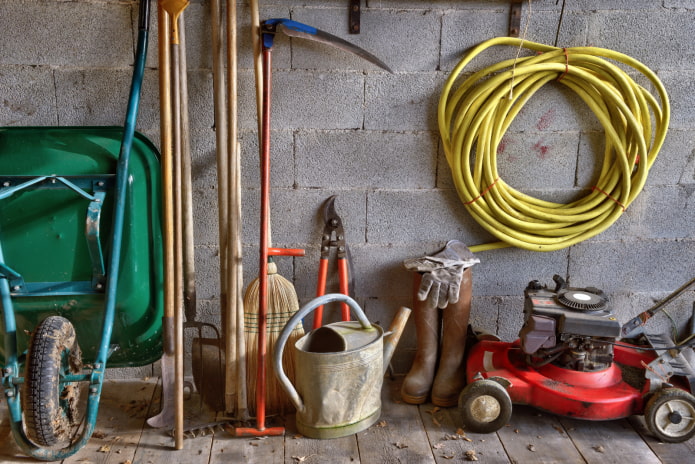
 What can you save on when renovating your summer cottage?
What can you save on when renovating your summer cottage?  Houses with panoramic windows: 70 best inspiring photos and solutions
Houses with panoramic windows: 70 best inspiring photos and solutions Brick facades of houses: photos, advantages and disadvantages
Brick facades of houses: photos, advantages and disadvantages Siding house facades: features, photos
Siding house facades: features, photos Terrace design in a private house in the Moscow region
Terrace design in a private house in the Moscow region Provence style house design in Moscow region
Provence style house design in Moscow region